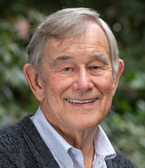Some say U. S. race relations are improving; others say not. Some say that affirmative action has fostered racial progress; others say not. But almost all Americans, liberal or conservative, agree that in the long run racial equality can be fully achieved only by eliminating disparities in the average educational performances of blacks and whites. Most Americans, we submit, would go so far as to say that if the next generation of blacks and whites acquire similar academic skills, the remaining barriers to racial equality could well slip away of their own accord.
General Audience Articles
The Wisconsin state legislature enacted in 1995 a large- scale voucher program offering a choice among both religious and secular schools to thousands of Milwaukee children living in low- income families. The program will not come into effect unless the Wisconsin state supreme court rejects a challenge to its constitutionality. Until such time, low income families seeking alternatives to the city's public schools must choose within the confines of a more limited plan set up in 1990. The Milwaukee story is hardly a "best practice" tale that educators love to relate.
The problems in American education are endemic. For example, compare math and science performance by students in the United States with that in other countries. The Third International Mathematics and Science Study ("TIMSS"), reporting on tests administered in 1995 to half a million students in forty-one countries, compares the math performance of U.S. students in fourth, eighth, and twelfth grades with that of students abroad. Math tests are thought to be especially good indicators of school effectiveness, because math, unlike reading and language skills, is learned mainly in school.
